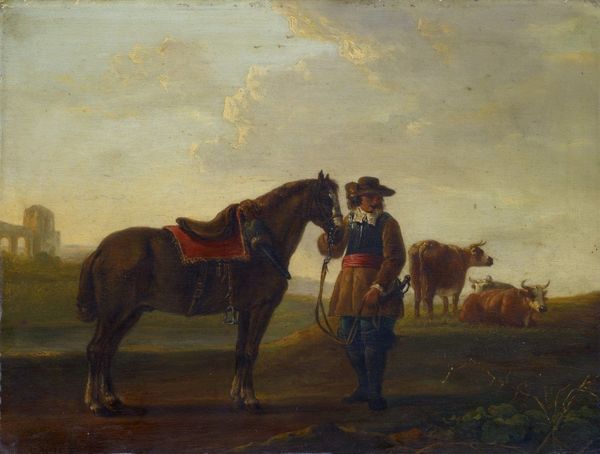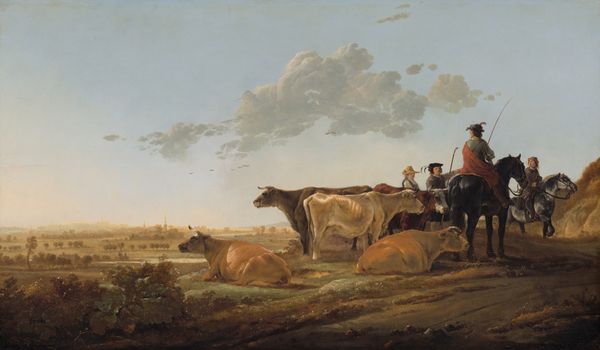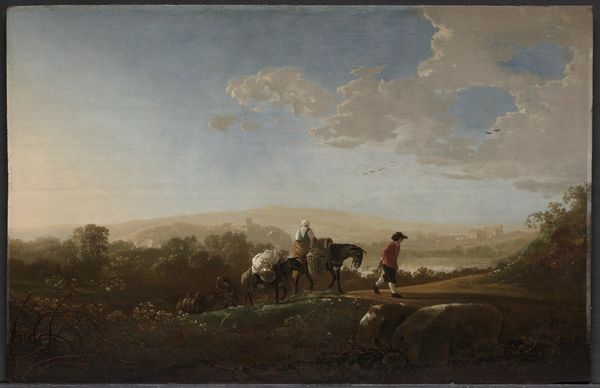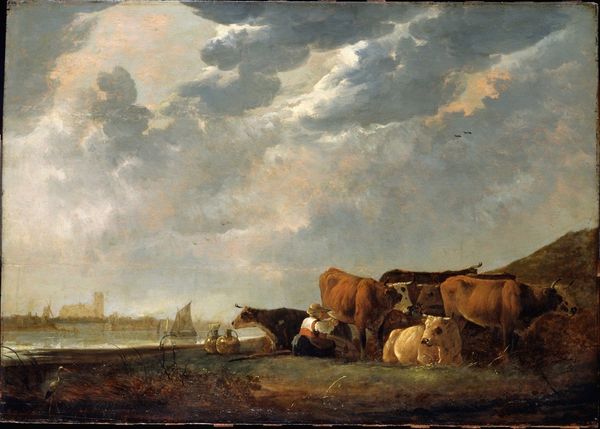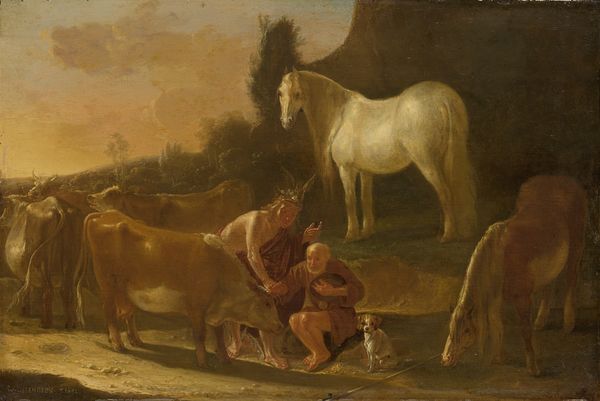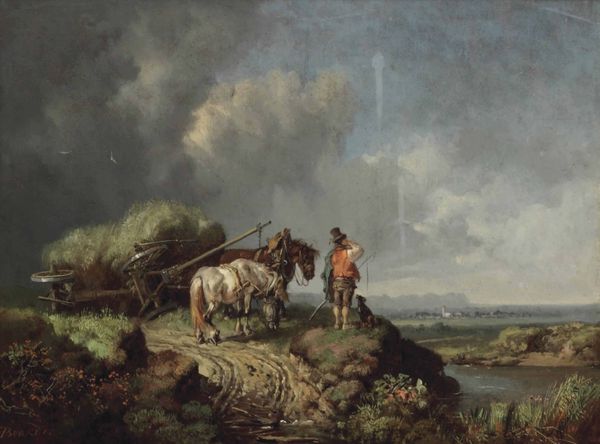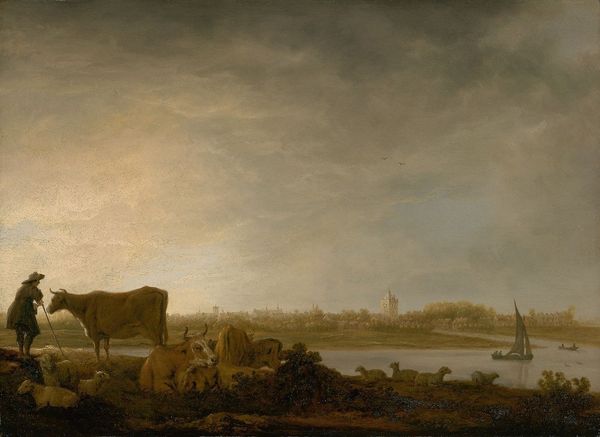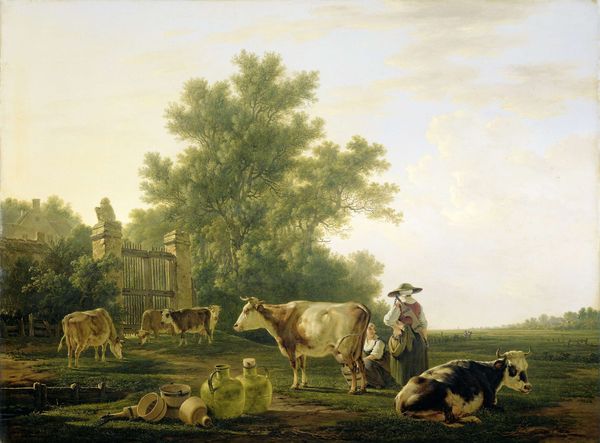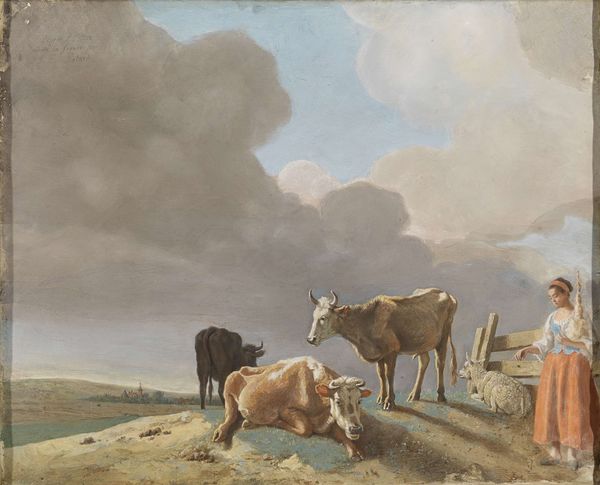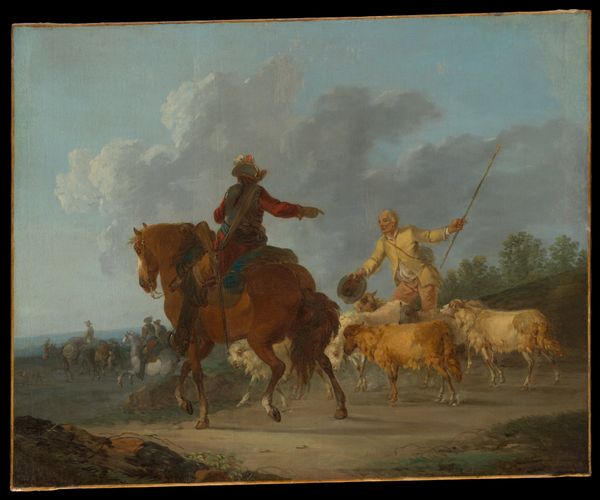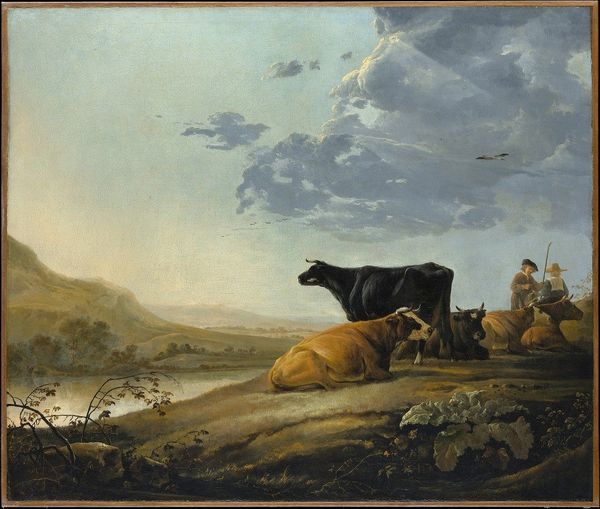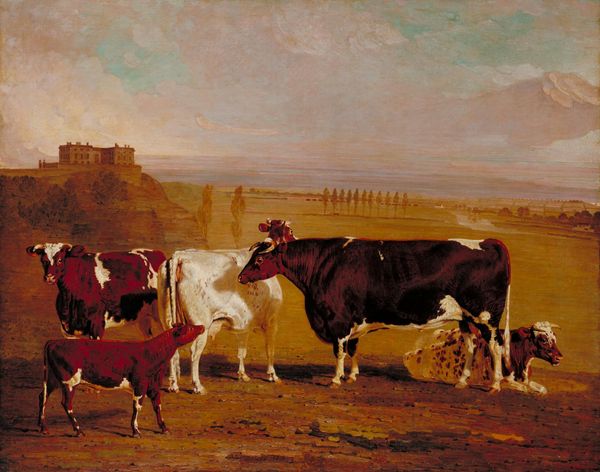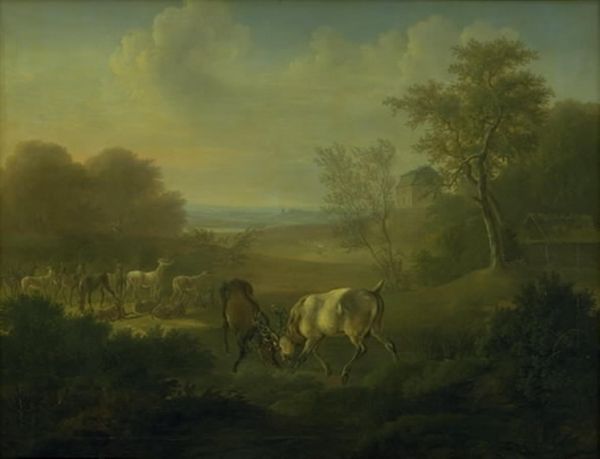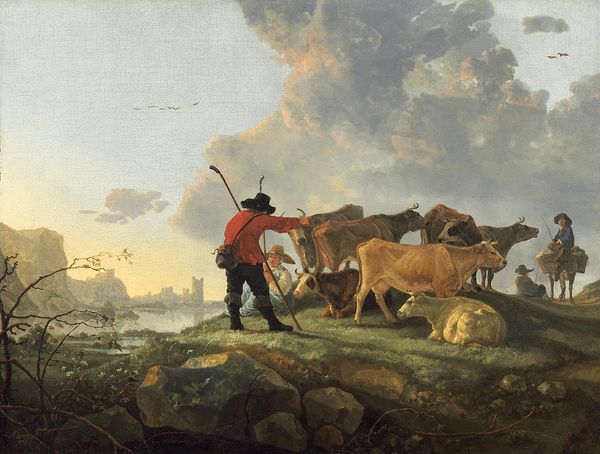
painting, oil-paint
#
portrait
#
baroque
#
dutch-golden-age
#
painting
#
oil-paint
#
landscape
#
figuration
#
genre-painting
#
realism
Copyright: Public Domain: Artvee
Aelbert Cuyp painted "Weide am Fluss" in the Netherlands, likely during the mid-17th century, using oil on canvas. Cuyp specialized in serene landscapes, often featuring golden light, cattle, and figures from different social strata. In this painting, the juxtaposition of the well-dressed rider on horseback with the resting cows and the common herdsman speaks volumes about the social hierarchy of the time. The distant cityscape, complete with windmills, places us firmly in the Dutch Golden Age, a period of unprecedented economic prosperity fueled by maritime trade and innovation. We can note the powerful merchant class commissioning art as signifiers of their wealth and status. To truly understand this work, archival research into Dutch social history, trade records, and the patronage system of the art market during the Golden Age might illuminate the relationship between artistic expression and societal structures. Art is always contingent on the social and institutional context in which it is made.
Comments
No comments
Be the first to comment and join the conversation on the ultimate creative platform.
